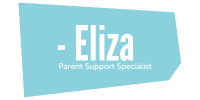 You’re smiling down at your baby, tilting your head back and forth to capture her attention. Chances are she’ll start to move her head back and forth to follow your gaze, smiling back up at you. But what happens when she doesn’t? Maybe you notice that she has her head tilted to one side and her chin to the other at an irregular angle. Maybe she’s having a hard time moving her head to the other side. Maybe you remember that breastfeeding on both sides has been difficult lately because she won’t turn her head. These might be signs that your baby has torticollis, also known as “wryneck”, which is a relatively common condition affecting anywhere from 3.9-16% of infants.
You’re smiling down at your baby, tilting your head back and forth to capture her attention. Chances are she’ll start to move her head back and forth to follow your gaze, smiling back up at you. But what happens when she doesn’t? Maybe you notice that she has her head tilted to one side and her chin to the other at an irregular angle. Maybe she’s having a hard time moving her head to the other side. Maybe you remember that breastfeeding on both sides has been difficult lately because she won’t turn her head. These might be signs that your baby has torticollis, also known as “wryneck”, which is a relatively common condition affecting anywhere from 3.9-16% of infants.
Torticollis may be present at birth, called congenital muscular torticollis, due to a shortening of the two large muscles in baby’s neck (the sternocleidomastoid muscles). This shortening could be a result of baby’s positioning in the womb or a related physiological condition. If baby develops torticollis within the first four to six months of life, it is called acquired torticollis, which usually occurs when there is swelling in the throat that can weaken the muscles in the spine and neck, causing the head to tilt to one side. (Check out this article from Boston’s Children’s Hospital article for more information on its causes.)
However, sometimes torticollis can be hard to spot in infants. If you’re looking at baby’s neck and there is one crease around her neck and shoulders that is deeper or longer than the crease on the other side, this may be a good indicator that her head is tilting more often to that side. Other signs and symptoms (from Cleveland Clinic) of torticollis to look out for in your baby include:
- Your baby’s head tilts to one side and chin tilts to the other side.
- Limited movement of your baby’s head and neck.
- One of your baby’s shoulders is higher than the other.
- Neck muscle tightness or stiffness.
- Swollen neck muscles.
- Small pea-sized lump in one of your baby’s neck muscles.
- Uneven (asymmetrical) facial features.
Additionally, when baby favors one side of their head more than the other, she might spend too much time looking to that side while on her back. This could lead to plagiocephaly or “flat head”, which often tends to be related to to torticollis and can be treated with a helmet.
While congenital torticollis is painless for babies, acquired torticollis can include severe neck pain, head tremors, and headaches along with these symptoms. In some cases, acquired torticollis may be a sign of a more serious underlying issue. It is important to consult with your primary care provider when you notice these signs so they can provide a full examination.
So, what can be done? Luckily, torticollis responds well to in-home interventions and physical therapy. The earlier treatment gets started, the less likely your baby’s condition will have long-term effects on their musculoskeletal development and can prevent it from worsening.
Helping your baby practice minor position changes and stretches throughout the day can help treat torticollis. Here are a few tips and ideas from Kids Plus Pediatrics to try with your baby,, adjusting the direction of the activity to increase mobility on her affected side:
- Hold toys so that your child has to look up and out to his RIGHT or LEFT.
- Position your child in the crib so activities in the room encourage her to look RIGHT or LEFT.
- While breastfeeding or bottle-feeding your child, position him to face RIGHT or LEFT.
- While holding your child across your shoulder, position her to face RIGHT or LEFT.
- When not in the car, don’t use the car seat as a place to put your child for playtime.
Daily tummy time is another great way to help strengthen baby’s neck muscles! Helping you infant develop their muscle strength now can help prevent motor delays and reduce the effects of plagiocephaly and torticollis. Starting from birth with increments of a few minutes at a time and with consistent practice throughout the day, work your way up to a total of one hour of tummy time per day by 3 months. Don’t be afraid to try other tummy time positions with baby!
In some cases, a visit to a specialist or further consultation with the baby’s healthcare provider will be needed. If you see no improvement in your baby’s condition after practicing stretches and other positions, reach out to them for additional treatment.
It’s helpful to remember that torticollis is usually easily treated and that your baby can learn to correct their head position with help from a loving caregiver like you. Take a deep breath and get ready to practice!





